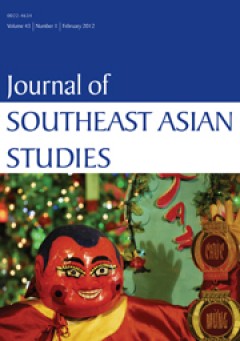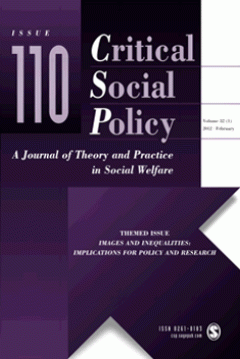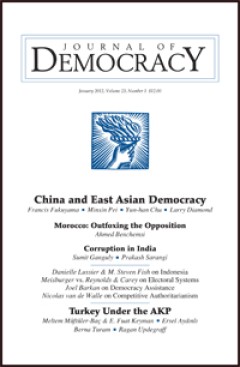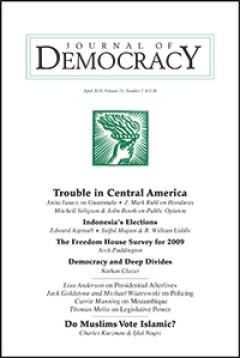Filter by

Questions of ordination legitimacy for newly ordained Theravāda bhikkhunī i…
In Thailand the widespread assumption that bhikkhun? ordination has already been disrupted and that as a result Therav?da Buddhist women can no longer be ordained has been challenged by a group of women who have received the full monastic precepts from foreign sa?gha and practise Therav?da Buddhism in yellow monastic robes. Public concerns have centred on whether such bhikkhun? ordinations are …
- Edition
- Vol. 43, No. 1, February 2012, pp 55-76
- ISBN/ISSN
- 00224634
- Collation
- -
- Series Title
- Journal of Southeast Asian Studies
- Call Number
- -

The curious memoirs of the Vietnamese composer Phạm Duy
This article reviews the memoirs of Ph?m Duy, a famous Vietnamese composer, who in the late 1930s and 1940s composed some of the first modern Vietnamese songs. His memoirs describe his time with the anti-French Resistance, his break with it in 1950, and his years in Saigon and the United States. My review focuses on curious aspects of these memoirs: Ph?m Duy's careful listing of his many love a…
- Edition
- Vol. 43, No. 1, February 2012,pp. 77-110
- ISBN/ISSN
- 00224634
- Collation
- -
- Series Title
- Journal of Southeast Asian Studies
- Call Number
- -

Connecting places, constructing Tết : Home, city and the making of the luna…
This paper presents an overview of the main features and nature of T?t, the Vietnamese lunar New Year festival, as it is currently experienced in H? Ch� Minh City. It outlines a variety of social practices associated with T?t and suggests that it is through these that one can identify a �festive landscape� in the city, within which a number of diverse places are made into and experienced as �me…
- Edition
- Vol. 43, No. 1, February 2012,pp 111-132
- ISBN/ISSN
- 00224634
- Collation
- -
- Series Title
- Journal of Southeast Asian Studies
- Call Number
- -

State, enterprise and the alcohol monopoly in colonial Vietnam
The state-administered monopoly on the production of distilled rice alcohol instituted in Vietnam after 1897 evolved into one of the colony's most pervasive and unpopular institutions. This article examines the origins and operations of the monopoly, focusing on how much revenue it generated and for whom. It reveals that the monopoly generated little net revenue for the state, and instead funct…
- Edition
- Vol. 43, No. 1, February 2012, pp 133-157
- ISBN/ISSN
- 00224634
- Collation
- -
- Series Title
- Journal of Southeast Asian Studies
- Call Number
- -

The destruction and assimilation of Campā (1832–35) as seen from Cam sources
This article proposes to study nineteenth-century Cam sources as valuable materials for the history of the disappearance of the kingdom of Camp? � or more precisely its last independent principality of P???ura?ga � and its integration into the Vietnamese realm during the first half of the nineteenth century. The end of Camp? is recorded mainly in metrical works known as �ariya�. These sources o…
- Edition
- Vol. 43, No. 1, February 2012,pp. 158-180
- ISBN/ISSN
- 00224634
- Collation
- -
- Series Title
- Journal of Southeast Asian Studies
- Call Number
- -

Back to school from a holiday in the slums! : Images, words and inequalities
In the late 1960s and early 1970s SHELTER produced a series of campaign pamphlets aimed at raising public awareness of homelessness in the United Kingdom. Back to school from a holiday in the slums! was one such pamphlet which, using a mixture of photographic images and oral testimony, posed a series of questions about the relationship between living in unfit and overcrowded housing and poor ed…
- Edition
- Vol. 32 no. 1, February 2012,pp. 11-30
- ISBN/ISSN
- 02610183
- Collation
- -
- Series Title
- Critical Social Policy
- Call Number
- -

Walking the neighbourhood, seeing the small details of community life: Reflec…
This paper examines the value of photography walking tours for exploring meanings and experiences of community. The work is part of a larger visual research project which sought to examine the everyday lives of residents in a neighbourhood identified as �disadvantaged�, with the tour being organized as an opportunity for residents to identify what they valued about their local environment and w…
- Edition
- Vol. 32 no. 1, February 2012,pp. 31-50
- ISBN/ISSN
- 02610183
- Collation
- -
- Series Title
- Critical Social Policy
- Call Number
- -

Visualizing risk : Health, gender and the ageing body
The promotion of �active� ageing in later life has been a key development in recent health and social care policy. These changes not only challenge the prevalent view of old age as an inevitable process of biological decline but also signify the tendency of lay and expert discourses to increasingly use the notion of risk. At the same time, older people�s social identities need to be negotiated …
- Edition
- Vol. 32 no. 1, February 2012 ,pp. 51-68
- ISBN/ISSN
- 02610183
- Collation
- -
- Series Title
- Critical Social Policy
- Call Number
- -

School choice and the commodification of education : A visual approach to sch…
As subjects of the parental right to choose (DES, 1988), parents are called upon to fulfil certain duties and responsibilities when choosing a secondary school for their child, with the expectation that they might navigate the school system �successfully� and become �better informed consumers� (DCSF, 2008). To comply with these rules of citizenship parents are encouraged to make use of a variet…
- Edition
- Vol. 32 no. 1, February 2012,pp. 69-86
- ISBN/ISSN
- 02610183
- Collation
- -
- Series Title
- Critical Social Policy
- Call Number
- -

Seeing colour in black and white : The role of the visual in diversifying his…
This paper will focus on the place of black history in heritage sites in England and discuss how visual methodologies can be used to develop a more inclusive approach to heritage. It will argue that visual archives, from portraits of the aristocracy to asylum portraits, are an essential part of the research process for heritage site staff who are assessing how they connect to (potential) visito…
- Edition
- Vol. 32 no. 1, February 2012 ,pp. 87-105
- ISBN/ISSN
- 02610183
- Collation
- -
- Series Title
- Critical Social Policy
- Call Number
- -

Migrant narratives of health and well-being : Challenging ‘othering’ proc…
This paper concerns the use of photo-elicitation interviews in constructing migrant narratives of health and well-being. It argues that photo-elicitation can be particularly effective in producing nuanced understandings about relationships among culture, place and health. It explores how, through this method, subject-centred understandings of health and well-being are able to challenge dominant…
- Edition
- Vol. 32 no. 1, February 2012,pp. 106-125
- ISBN/ISSN
- 02610183
- Collation
- -
- Series Title
- Critical Social Policy
- Call Number
- -

The Coming Wave
If there is going to be a great advance of democracy in this decade, it is most likely going to emanate from East Asia.
- Edition
- Volume 23, Number 1, January 2012, pp. 5-13
- ISBN/ISSN
- 10455736
- Collation
- -
- Series Title
- Journal of Democracy
- Call Number
- -

Is CCP Rule Fragile or Resilient?
Is "authoritarian resilience" in China a passing phenomenon, or is it something more durable?
- Edition
- Volume 23, Number 1, January 2012, pp. 27-41
- ISBN/ISSN
- 10455736
- Collation
- -
- Series Title
- Journal of Democracy
- Call Number
- -

The Taiwan Factor
If the PRC moves toward democracy, it is likely to be in some part due to the influence of Taiwan.
- Edition
- Volume 23, Number 1, January 2012, pp. 42-56
- ISBN/ISSN
- 10455736
- Collation
- -
- Series Title
- Journal of Democracy
- Call Number
- -

The Patterns of History
The legitimacy and appeal of democracy in East Asia will depend on how democratic countries in the region stack up against China.
- Edition
- Volume 23, Number 2, January 2012, pp. 14-26
- ISBN/ISSN
- 10455736
- Collation
- -
- Series Title
- Journal of Democracy
- Call Number
- -

Morocco : Outfoxing the Opposition
Morocco was not immune to the 2011 upheavals in the Arab world, but the country's monarchy deftly managed the crisis through cosmetic constitutional reform.
- Edition
- Volume 23, Number 1, January 2012, pp. 57-69
- ISBN/ISSN
- 10455736
- Collation
- -
- Series Title
- Journal of Democracy
- Call Number
- -

Indonesia : The Benefits of Civic Engagement
Indonesia, a populous, poor, predominantly Muslim society, has been able to maintain democracy thanks to a vibrant associational life.
- Edition
- Volume 23, Number 1, January 2012, pp. 70-84
- ISBN/ISSN
- 10455736
- Collation
- -
- Series Title
- Journal of Democracy
- Call Number
- -

Democracy Assistance : What Recipients Think
A groundbreaking new survey shows that democracy assistance is highly valued by its recipients but that there remains room for improvement.
- Edition
- Volume 23, Number 1, January 2012, pp. 129-137
- ISBN/ISSN
- 10455736
- Collation
- -
- Series Title
- Journal of Democracy
- Call Number
- -

An Enduring Threat
Social activist Anna Hazare's hunger strike has helped to turn the world's attention to India's rampant corruption.
- Edition
- Volume 23, Number 1, January 2012, pp. 138-148
- ISBN/ISSN
- 10455736
- Collation
- -
- Series Title
- Journal of Democracy
- Call Number
- -

Can The Right To Information Help?
India's Right to Information Act discourages corruption by giving every citizen the right to access information from any public authority
- Edition
- Volume 23, Number 1, January 2012, pp. 149-154
- ISBN/ISSN
- 10455736
- Collation
- -
- Series Title
- Journal of Democracy
- Call Number
- -
 Computer Science, Information & General Works
Computer Science, Information & General Works  Philosophy & Psychology
Philosophy & Psychology  Religion
Religion  Social Sciences
Social Sciences  Language
Language  Pure Science
Pure Science  Applied Sciences
Applied Sciences  Art & Recreation
Art & Recreation  Literature
Literature  History & Geography
History & Geography